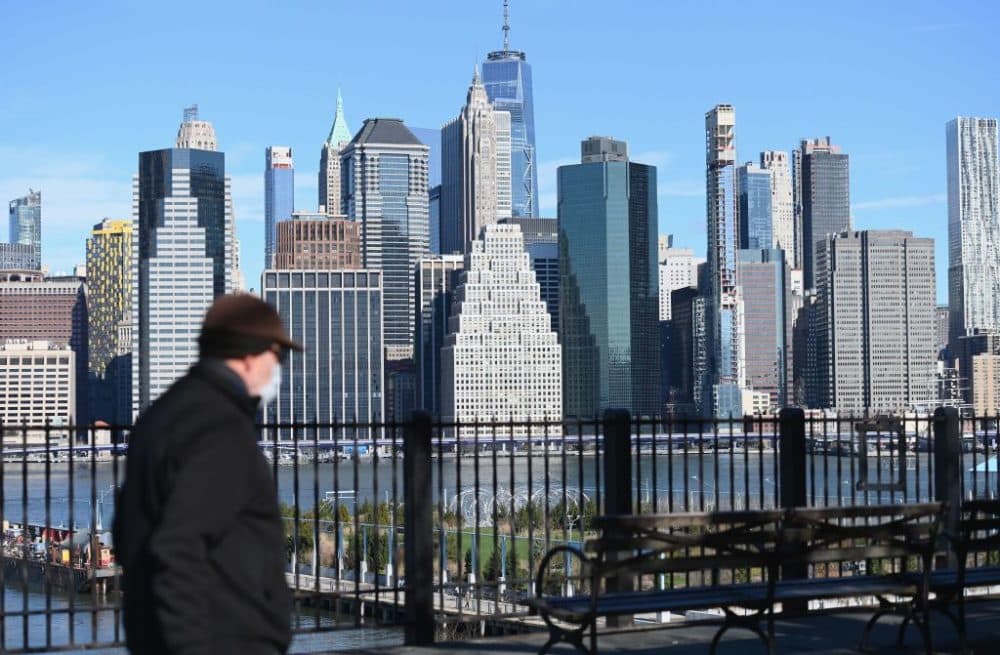Advertisement
Models Show 'Hidden Outbreak' Spread Weeks Before U.S. Took Action To Slow The Coronavirus

New research suggests the coronavirus started spreading in the U.S. weeks before public officials previously thought.
Modeling from Northeastern University publicized this week suggests thousands of cases may have spread undetected throughout New York, Boston, San Francisco, Chicago and Seattle in January and February — long before those cities and others registered an official case count or implemented social distancing measures.
Only 23 cases of coronavirus were confirmed in these cities as of March 1 but the Northeastern modeling suggests about 28,000 people may have been infected at that time. Professor Alessandro Vespignani says the virus was spreading around major hot spots by mid-January.
“The epidemic had a long time to spread undetected in the population,” says Vespignani, director of the Network Science Institute at Northeastern University.
This “invisible” chain of transmission went undetected for a long time because it’s common for people to experience mild flu-like symptoms during the winter, he says. Once the number of sick individuals built up, he says doctors then started to see the “tip of the iceberg” and identify COVID-19 cases.
A large number of these hidden infections are asymptomatic or subclinical, which means the individual experienced only mild symptoms, he says. These patients seldom go to the hospital or emergency room.
“Unless you have a large number of cases — truly large — you don't see people going to the hospital and you don't see the number of deaths that we are unfortunately witnessing now,” he says, “because we have really hundreds of thousands and millions of infections.”
The modeling shows people who were never diagnosed could have died from COVID-19 complications. That’s the case around the world, he says.
In January and February, no country had the capacity to do mass testing. Countries adopted a policy of testing people with a travel history linked to China and symptoms, he says, but that wasn’t enough once the invisible transmission began.
This week, officials confirmed the mysterious death of a woman named Patricia Dowd in early February was the first documented coronavirus fatality in the U.S., the Los Angeles Times reports. Vespignani says this reinforces the results of the modeling.
Advertisement
Other modeling teams also pointed out an undetected spread, he says, and the information was presented to government agencies that “seriously considered” the findings.
While the modeling prompted some action from local and national policymakers, it’s difficult to shut down the country based on numbers without seeing cases and deaths in hospitals, he says.
Dr. Donald Burke, a professor of epidemiology at the University of Pittsburgh Graduate School of Public Health, told The New York Times he thought these estimates are too high.
With regard to the modeling’s confidence interval, Vespignani thinks the findings of this data are clear.
“If we don't really test then trace contacts in a very aggressive way, this disease might spread unnoticed in an invisible way,” he says. “And we don't want that to happen again.”
Chris Bentley produced and edited this interview for broadcast with Peter O'Dowd. Allison Hagan adapted it for the web.
This segment aired on April 24, 2020.

